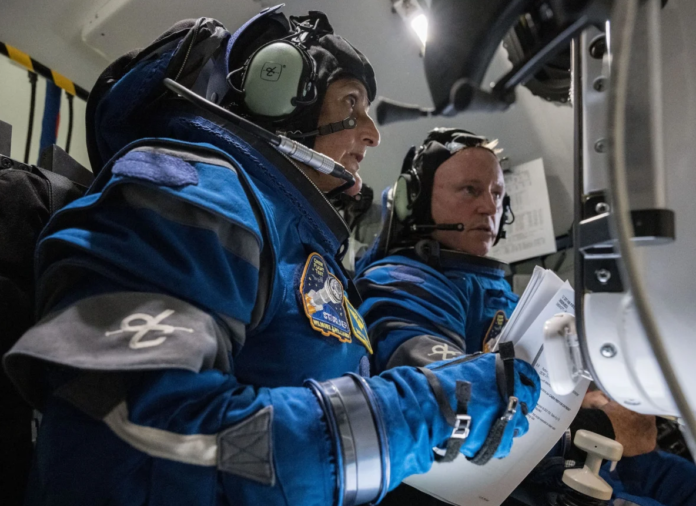Two NASA astronauts have no set date to return to Earth and are stuck waiting aboard the International Space Station (ISS) due to several mechanical issues with Boeing’s Starliner spacecraft.
Starliner launched on June 5 from the Cape Canaveral Space Force Station in Cape Canaveral, Florida, with flight commander Barry “Butch” Wilmore and flight pilot Sunita “Suni” Williams onboard, arriving at the ISS one day later.
The mission is part of the larger Commercial Crew Program at NASA, which was testing if Boeing’s spacecrafts could be certified to perform routine missions to and from the ISS.
The pair were originally scheduled to return on June 14 but have since had their return delayed multiple times, and currently do not have a planned date to return to Earth.
“We are taking our time and following our standard mission management team process,” Steve Stich, manager of NASA’s Commercial Crew Program, said in a statement. “We are letting the data drive our decision making relative to managing the small helium system leaks and thruster performance we observed during rendezvous and docking.”

Boeing and NASA have said the crew is currently not in danger because they are aboard the ISS with plenty of supplies in orbit, and the station’s schedule is relatively open through mid-August.
NASA and Boeing say Wilmore and Williams are “integrated” with the Expedition 71 crew aboard the ISS and are helping the crew with station operations as needed as well as completing “objectives” needed for NASA’s possible certification of Starliner.
“The crew’s feedback has been overwhelmingly positive, and they know that every bit of learning we do on the Crew Flight Test will improve and sharpen our experience for future crews,” Mark Nappi, vice president and program manager of Boeing’s Starliner program, said in a statement.
Starliner has been plagued by issues even before launch. The flight test was originally tentatively scheduled for May 6, but was scrubbed after a problem with an oxygen valve on a rocket from United Launch Alliance (ULA), which manufactures and operates the rockets that launch spacecraft into orbit.
A new launch date had been set for May 25, but a small helium leak was discovered in the service module, which contains support systems and instruments for operating a spacecraft.
Helium leaks and a thruster issue then threatened to delay Starliner’s docking. Five days after docking at the ISS, NASA and Boeing said the spacecraft was experiencing five “small” helium leaks and, at the time, said enough helium was available for the return mission.
MORE:

